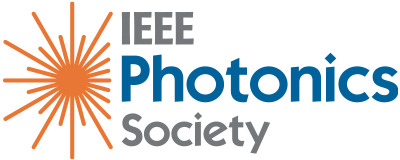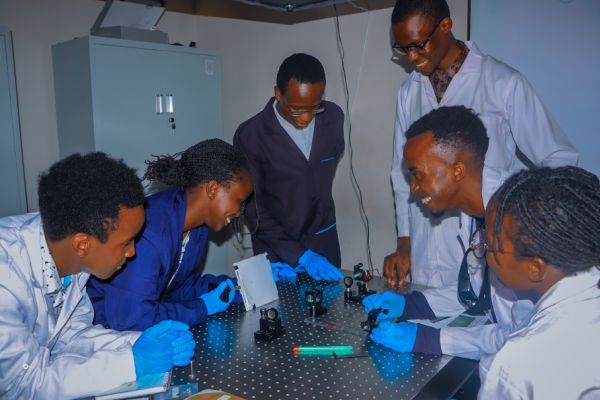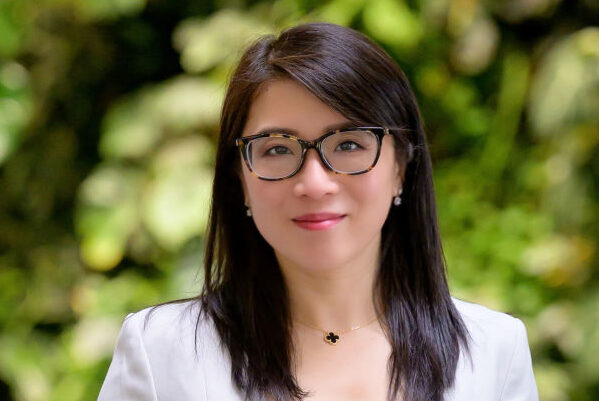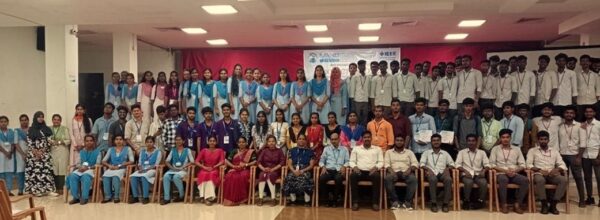The IEEE Photonics Kenya, IEEE Multimedia University of Kenya Student Branch, IEEE Kenyatta University Student Branch and National Institute for Optics and Lasers at the National Institute for Optica and Lasers (NIOL Labs) held a workshop at Multimedia University of Kenya. The main aim of the workshop was to provide participants, mainly undergraduate students, with a comprehensive understanding of photonics technologies, surrounding both theoretical knowledge and practical skills.
Through interactive sessions and hands-on lab activities, the workshop aimed to equip attendees with the tools and expertise necessary to leverage photonics advancements in their respective fields, fostering innovation and collaboration in the realm of optics and lasers.
The event was graced with IEEE Photonics members from different IEEE Photonics communities in Kenya. The universities represented include: Multimedia University of Kenya, Kenyatta University, Dedan Kimathi University of Technology, University of Nairobi and Jomo Kenyatta University of Agriculture and Technology. We also had the parent-IEEE Young Professionals represented.
This immersive event offered a unique blend of theoretical insights and practical experiences, allowing attendees to delve into the details of light-based technologies first hand. From exploring cutting-edge concepts to engaging in hands-on experiments within the laboratory setting, the workshop provided an invaluable opportunity to deepen understanding and foster innovation in the field of optics, lasers and photonics.
The event was met with substantial interest, drawing a diverse cohort of 60 participants keen on immersing themselves in the details of Photonics. Guided by our accomplished lead laboratory technologist, Elvis Kipkemoi, the program unfolded through a precisely structured series of laboratory sessions. These sessions were tailored to address specific areas of Photonics, offering participants a comprehensive understanding of the field.
Throughout the event, participants rotated through different sessions, each designed to explore a unique aspect of Photonics. This approach not only ensured that attendees gained exposure to a diverse range of topics but also encouraged interdisciplinary interaction and knowledge sharing.
The workshop contained several practical lab activities, which included:
1. Laser Safety and Handling
Attendees came to understand that laser safety encompasses protocols to minimize risks associated with laser radiation, including beam hazard awareness, control measures, personal protective equipment and safe handling practices.
The sessions are designed to support learning around various types of lasers including, laser diodes; compact semiconductor devices emitting coherent light, used in telecommunications and optical storage, gas lasers; utilize gas mixtures as the active medium, offering high power output for industrial, medical, and scientific applications, and solid-state lasers; employ solid materials like crystals or glasses.
2. Michelson Interferometer Kit
This was an optical apparatus demonstrating interference phenomena. It included a beam splitter, mirrors, and a detector on an optical breadboard. Its applications include metrology, interferometric imaging, spectroscopy, gravitational wave detection, and interferometric sensors.
Overall, participants learned that it serves as a versatile tool for educational demonstrations and advanced research in optics, enabling insights into light behavior and facilitating various scientific and technological applications.
3. Polarization and 3D Cinema Technology Kit
This included tools like polarizing filters and 3D glasses. Polarization manipulation allowed us to demonstrate light phenomena, while 3D technology created depth perception for immersive viewing experiences.
This is applied in entertainment and education to medical imaging and scientific research, highlighting the versatility and significance of these technologies in various fields.
4. Optical Microscopy Kit
Attendees learned that this kit consists of a microscope with lenses, eyepieces, illumination sources, and specimen holders. It used visible light and lenses to magnify microscopic samples. It’s applied in biological sciences for observing cells and organisms, in forensic sciences for analyzing trace evidence and biological samples, in quality control for inspecting manufactured components for defects and dimensions.
5. Fourier Optics Kit
Participants learned that this kit is used to study fourier optics principles, consisting of lenses, apertures, spatial filters, mirrors, and mounts. It enables experiments in image processing, optical information processing, holography, and interferometry, serving as a versatile tool for understanding and applying Fourier optics concepts in various optical applications.
Conclusion
The workshop overall provided a comprehensive exploration of photonics technologies. Participants engaged in hands-on sessions covering diverse areas. The event attracted students from various universities and young professionals, fostering a vibrant and diverse learning environment.
Some of the impacts this workshop include:
- Enhanced awareness and adherence to laser safety protocols among participants.
- Practical skills acquisition in utilizing advanced photonics tools and techniques.
- Empowerment of participants to conduct sophisticated research and innovation in photonics.
- Facilitation of networking opportunities and interdisciplinary collaborations among attendees.
- Fostering a collaborative mindset and appreciation for the transformative potential of photonics technologies in addressing real-world challenges.
The workshop session held at the esteemed National Institute for Optics and Lasers Laboratory stands as a pivotal event in the realm of photonics education and professional development. Through precisely curated hands-on sessions and expert guidance, participants were not only equipped with practical skills but also cultivated a deeper understanding of safety protocols and the transformative potential of photonics technologies.
Moreover, the event served as a link for fostering interdisciplinary collaboration and networking among attendees, laying the groundwork for future advancements in the field.
Overall, the workshop left a permanent mark on participants, empowering them with the tools, knowledge, and connections necessary to excel in their endeavors within the dynamic landscape of photonics.
Acknowledgements
The organizers extend our sincerest gratitude to the organizing committee of the workshop session, spearheaded by IEEE Photonics Kenya, IEEE Photonics Multimedia University of Kenya, and IEEE Photonics Kenyatta University. Their dedication, thorough planning, and unwavering commitment were instrumental in arranging a seamless and enriching event.
Those involved also express our heartfelt appreciation to the participants from various universities whose active involvement and enthusiastic participation made the event truly memorable. Their engagement, insights, and contributions significantly enhanced the collaborative learning environment and enriched the overall experience for all attendees.





